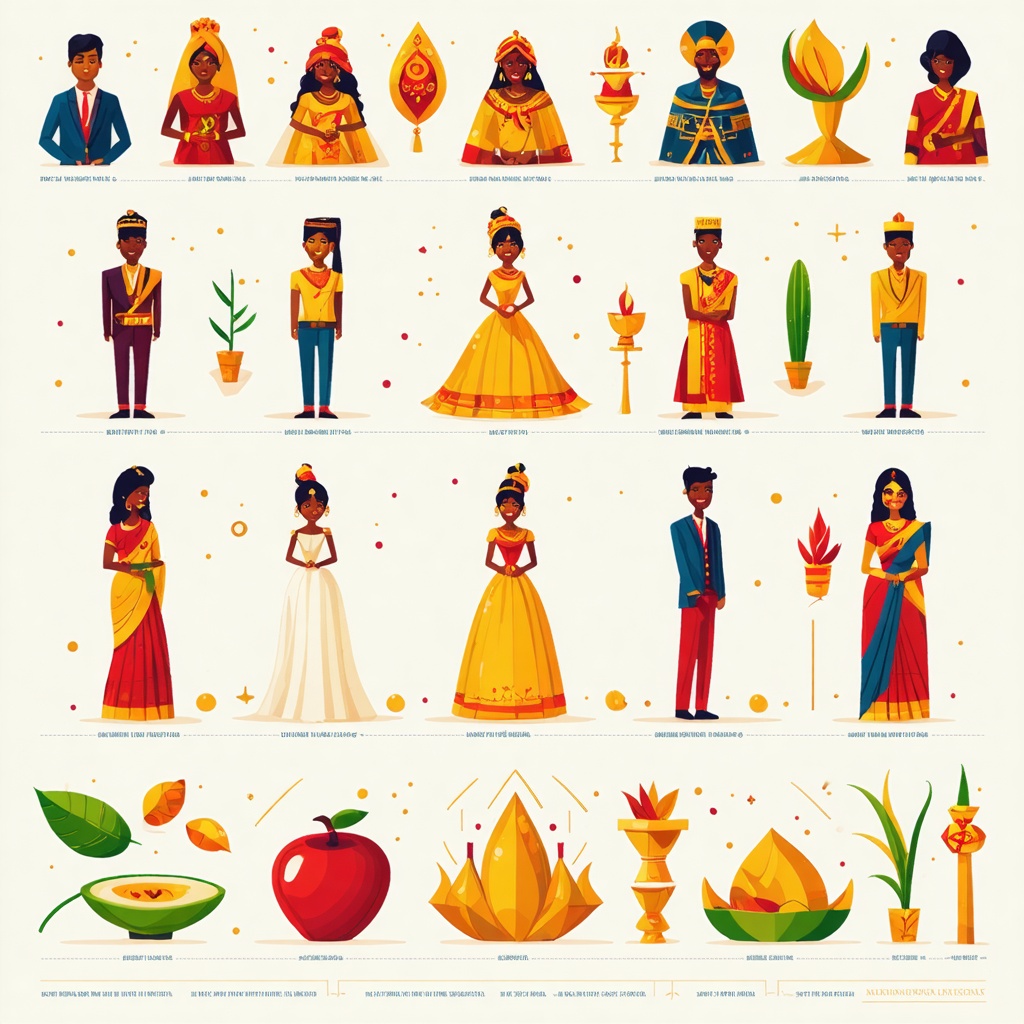Celebrating Diversity: A Guide to Multicultural Weddings
Introduction
Planning a multicultural wedding can be an exciting yet challenging endeavor. This guide aims to provide insights into the definition, importance, and unique aspects of multicultural weddings, offering tips for modern touches, overcoming challenges, and celebrating cultural exchanges. Let’s dive into the world of multicultural weddings!
Definition of Multicultural Weddings
A multicultural wedding is one where two individuals from different cultural backgrounds come together to celebrate their union. These weddings often blend elements from both cultures, creating a unique celebration that honors the heritage of both partners.
Key Elements of Multicultural Weddings
- Cultural Traditions: Incorporating elements from both cultures.
- Language: Using languages from both sides.
- Food: Including dishes from both cultural backgrounds.
Importance of Blending Traditions
Blending traditions is crucial in multicultural weddings as it allows both families to feel included and respected. It also creates a richer and more meaningful ceremony.
Benefits of Blending Traditions
- Inclusion: Ensures both families feel part of the celebration.
- Meaningful Ceremony: Combines the best practices from both cultures.
- Unity: Strengthens bonds between the two families.
Modern Touches in Wedding Planning
Incorporating modern touches can make your multicultural wedding stand out and appeal to a broader audience. Here are some ideas:
Tech Integration
- Online Platforms: For guest registration and RSVPs.
- Live Streaming: To reach those who couldn’t attend.
Eco-Friendly Options
- Local Vendors: Supporting local businesses.
- Recycled Decorations: Using materials that reduce waste.
Challenges and Solutions in Organizing
Organizing a multicultural wedding comes with its own set of challenges. Here are some common issues and solutions:
Language Barriers
- Professional Translators: Ensure smooth communication.
- Language Classes: For guests who speak different languages.
Cultural Differences
- Education: Understanding and respecting each other’s customs.
- Mediators: To help resolve any misunderstandings.
Benefits of Cultural Exchange
Engaging in cultural exchange during your wedding can bring numerous benefits:
Enhanced Understanding
- Increased Respect: Towards each other’s cultures.
- Broader Perspectives: On life and relationships.
Personal Growth
- New Skills: Learning new languages and traditions.
- Stronger Relationships: With both sets of families.
Creative Ideas for Decorations
Decorating your wedding venue with multicultural elements can make it a memorable experience. Here are some creative ideas:
Color Schemes
- Dual Colors: Representing both cultures.
- Gradient Effects: Combining colors smoothly.
Themes
- Historical Events: Highlighting significant moments from both cultures.
- Famous Figures: Celebrating influential figures from both backgrounds.
Unique Rituals and Ceremonies
Unique rituals and ceremonies add a personal touch to your wedding:
Welcome Rituals
- Symbolic Acts: Like lighting a candle.
- Welcome Speeches: By family members.
Farewell Rituals
- Sending Off: With a symbolic gift or gesture.
- Celebratory Fireworks: To signify a new beginning.
Conclusion
Planning a multicultural wedding is not just about combining traditions but also about celebrating diversity and unity. By blending traditions, incorporating modern touches, and addressing challenges creatively, you can create a wedding that is truly unique and memorable. Whether you’re planning a small gathering or a grand celebration, remember that the heart of a multicultural wedding lies in the love shared by the couple and their families.
Call to Action
Are you planning a multicultural wedding? Share your experiences and tips in the comments below! Let’s inspire each other and ensure that every multicultural wedding is celebrated with joy and respect.






